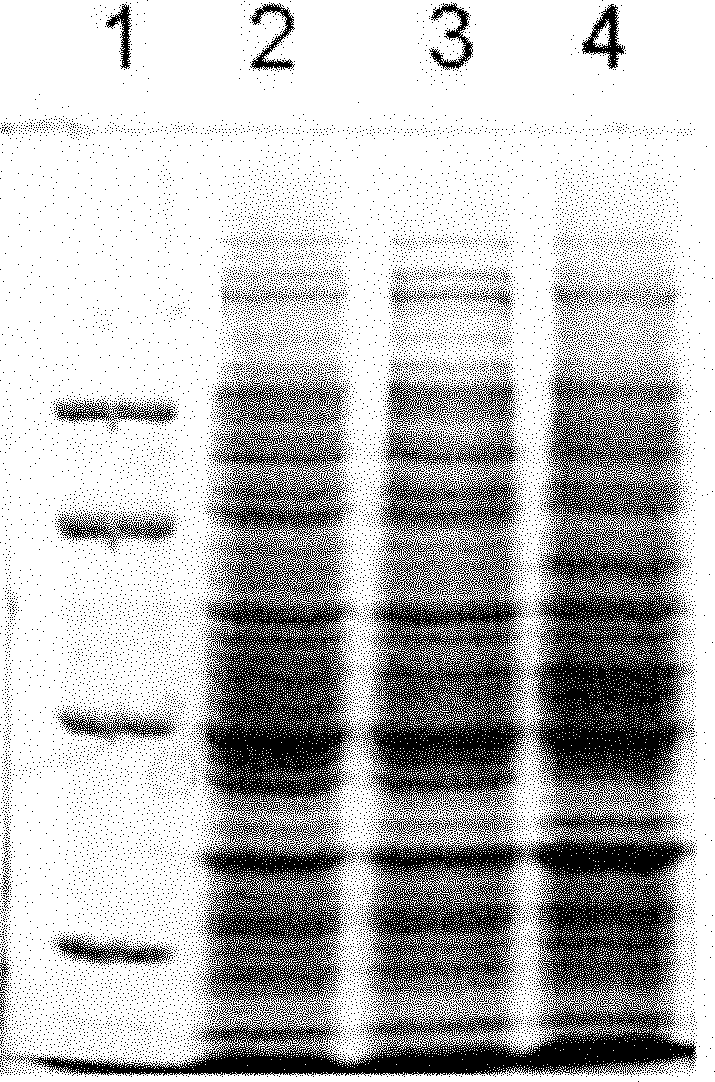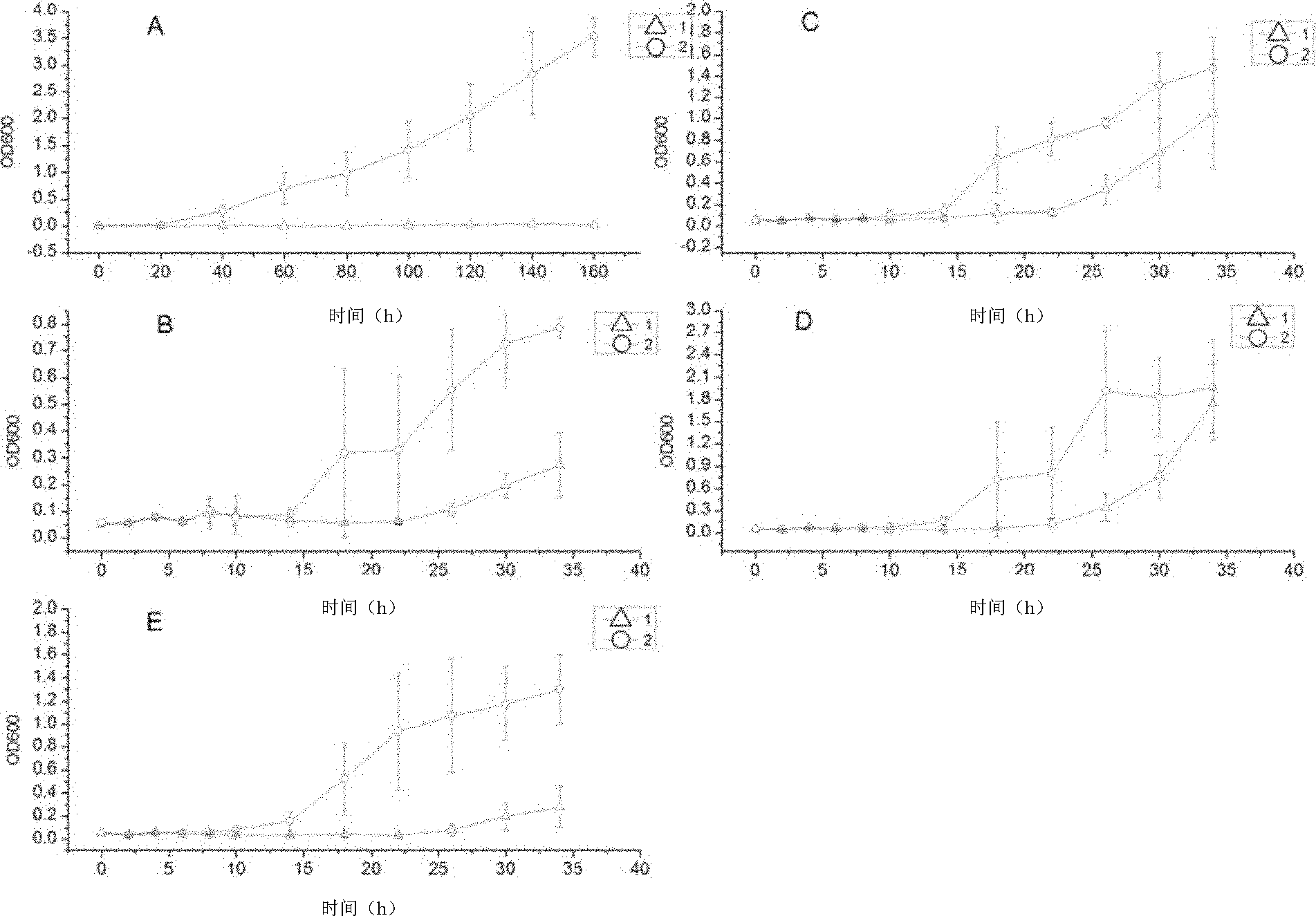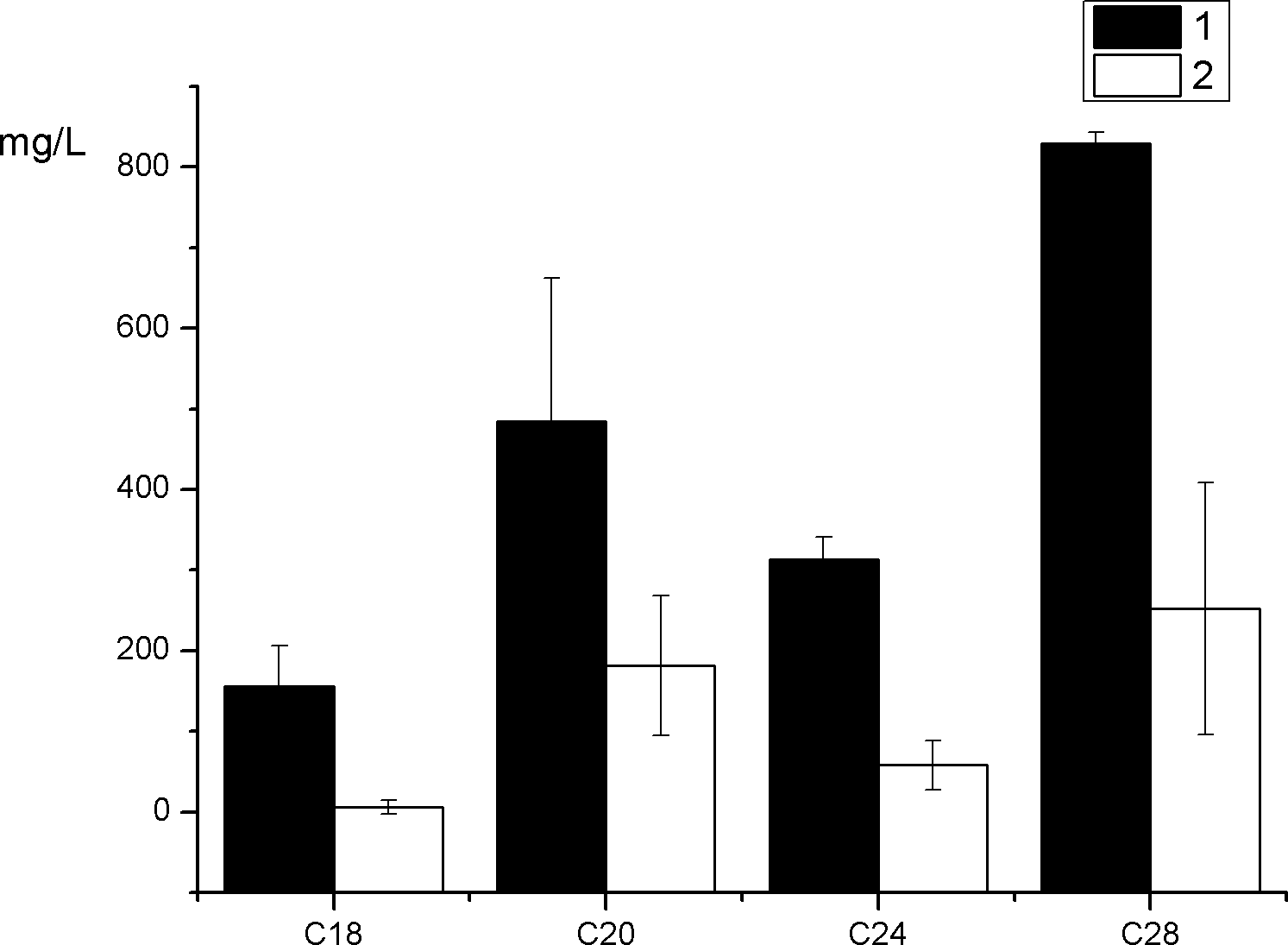Protein, coding gene of the protein, and use of the protein in petroleum hydrocarbon degradation
A technology for encoding genes and proteins, which is applied in the application field of proteins and their encoding genes and the degradation of petroleum hydrocarbons, can solve the problems of limiting the effective utilization of high-efficiency biological resources, and achieve the effect of improving the degradation ability
- Summary
- Abstract
- Description
- Claims
- Application Information
AI Technical Summary
Problems solved by technology
Method used
Image
Examples
Embodiment 1
[0029] Embodiment 1, the cloning of gene YMF4383
[0030] A new gene was discovered from a strain of Dietzia, and sequence 1 was artificially synthesized as the nucleotide sequence of the gene.
[0031] Using the artificially synthesized sequence 1 as a template, using the alkBr upstream primer and alkBr downstream primer as primers,
[0032] alkBr upstream primer 5'-GGAATTC Catatgt ccagcaccgaatacat-3' (sequence 3), containing Nde I restriction site;
[0033] alkBr downstream primer 5'-CCC AAGCTT gctacttcacgggcaggaag-3' (SEQ ID NO: 4), containing a HindIII restriction site;
[0034] Using TOYOBO's KOD-plus-high-fidelity enzyme, perform PCR to obtain PCR products.
[0035] The reaction system is as follows:
[0036] 10×PCR buffer 5μl
[0037] Deionized water 37μl
[0038] dNTP mix 5μl
[0039] KOD-plus- 0.5μl
[0040] DNA template 1μl
[0041] Primer 1 (alkBr upstream primer) 1 μl
[0042] Primer 2 (alkBr downstream primer) 1 μl
[0043] Total 50μl
[0044] The P...
Embodiment 2
[0055] Example 2, Functional Research of YMF4383
[0056] 1. Construction of expression vector
[0057] Select pCom8 shuttle vector (Smits and T, 2001, New Alkane-Responsive Expression Vectors for Escherichia coli and Pseudomonas, Plasmid 46 (1): 16-24, the public can obtain from Peking University.) as expression plasmid, containing gentamicin resistance. The expression host is Pseudomonas fluorescens KOB2Δ1 (Smits, T.H.M., S.B.Balada, et al., 2002, Functional Analysis of Alkane Hydroxylases from Gram-Negative and Gram-Positive Bacteria, Journal of Bacteriology 184(6) : 1733-1742., publicly available from Peking University.).
[0058] The PCR product obtained in Example 1 and the pCom8 plasmid were subjected to double digestion with Nde I and Hind III respectively, and the digested products were purified with the kit. The system is as follows:
[0059] PCR recovery product pCom8
[0060] 10×M buffer 5μl 5μl
[0061]Deionized water 33μl 41μl
[0062] NdeI...
PUM
 Login to View More
Login to View More Abstract
Description
Claims
Application Information
 Login to View More
Login to View More - R&D
- Intellectual Property
- Life Sciences
- Materials
- Tech Scout
- Unparalleled Data Quality
- Higher Quality Content
- 60% Fewer Hallucinations
Browse by: Latest US Patents, China's latest patents, Technical Efficacy Thesaurus, Application Domain, Technology Topic, Popular Technical Reports.
© 2025 PatSnap. All rights reserved.Legal|Privacy policy|Modern Slavery Act Transparency Statement|Sitemap|About US| Contact US: help@patsnap.com



